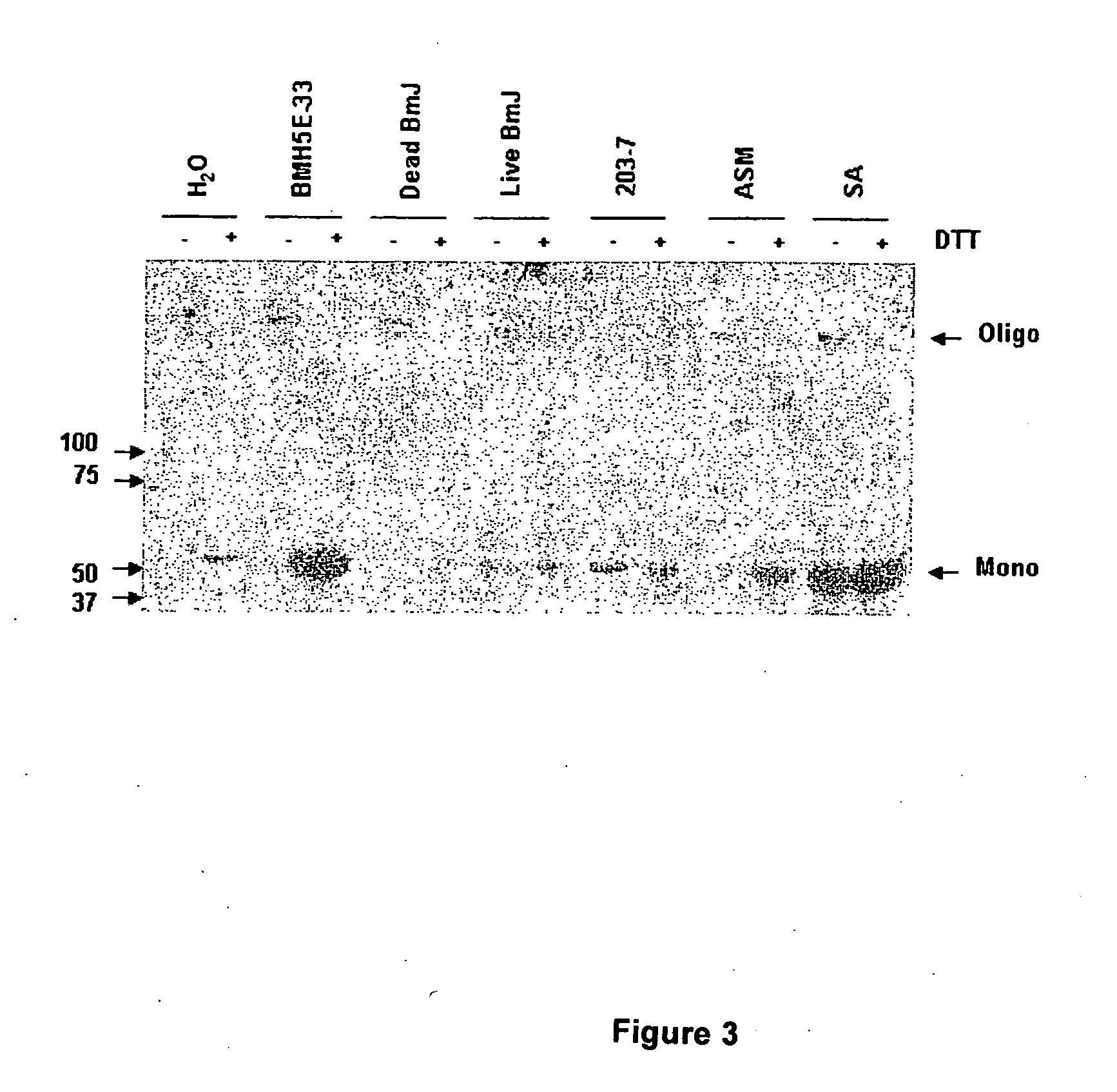Bacillus mycoides isolate that induces systemic resistance
a technology of mycoides and mycoides, applied in the field of mycoides mycoides isolate that induces systemic resistance, can solve problems such as necrotic cell death
- Summary
- Abstract
- Description
- Claims
- Application Information
AI Technical Summary
Problems solved by technology
Method used
Image
Examples
example 1
Isolation and Testing of Bacillus mycoides Isolate BmJ
[0065]Bacillus mycoides isolate J (BmJ) was isolated from sugar beet leaves as follows. Leaf samples from sugar beets plants that had reduced infection by Cercospora beticola (CB), the fungal pathogen that is the causal agent of Cercospora leaf spot, were collected from a sugar beet field in Sydney Mont. The leaves were washed and pasteurized. Endospores were isolated from the pasteurized wash. The endospores were grown and tested for the ability to induce resistance to CB in sugar beets. One of the isolates, BmJ, was selected for use as a biological control agent because it provided the best control of isolates tested in early glasshouse trials.
[0066] In preliminary studies, a spontaneous Rifampicin resistant mutant of BmJ, that did not differ in growth rate or disease control capabilities from BmJ, was utilized in repeated attempts to isolate BmJ at 3, 6, 9, and 18 d post treatment from distal untreated and treated sugar beet...
example 2
Testing of BmJ in Growth Chamber Experiments BmJ Preparation
[0067]B. mycoides isolate J (BmJ) cells, originally isolated from sugar beet leaves from Sidney, Mont. in 1994, were stored at −80° C. in 10% glycerol and I % tryptic soy broth (TSB) (Difco). For fresh cell preparations, BmJ was cultured in TSB for 48 h (28° C.). Cells were centrifuged 15 min at 10 000 g (4° C.), washed with sterile water (2×), then resuspended in distilled water. The optical density was adjusted to A600 1.0, then diluted 1:2 based on optical density curves confirmed by dilution plating. This optical density and dilution provided for approximately I×108 cfu ml−1. The precise number of cells was not determined due to the chain-forming nature of the organism. For experiments testing dead cells, BmJ was autoclaved in water for 30 min following washing. Autoclaved cells were tested for lack of viability by plating 100 microliters onto three plates of 50% Tryptic soy agar (TSA). For field studies, either fresh ...
example 3
Disease Reduction Capabilities of B. Mycoides and B. Pumulis Isolates
Bacterial Cultures
[0076]Bacillus mycoides isolate J (BmJ) was originally isolated from the phylloplane of sugar beet. B. pumilus isolates 203-11. 341-21-15. 203-6, 341-20-14, 241-20-1, 203-3, 203-4, and 341-16-5 and B. mojavensis isolate 203-7 were isolated from embryos of germinating sugar beet seeds. B. pumilus isolates BMH5E-33 and BMH5E40 were isolated from the sugar beet rhizosphere. All isolates were stored at −80′ C. in 10% glycerol and I′% tryptic soy broth (Difco). For fresh cell preparations, the bacilli were cultured in tryptic soy broth for 48 hours at 28° C. Cells were centrifuged 15 min at 10,000 g (4° C.). washed with sterile water (2×), and resuspended in distilled water. The optical density was adjusted to A600=1.0, and diluted 1:2 to obtain approximately I×108 cfu / ml.
Fungal Culture
[0077] Cercospora beticola (CB) isolate EC3 (isoated in Sidney. Mont. in 1996) was grown on V-8 agar far a minim...
PUM
 Login to View More
Login to View More Abstract
Description
Claims
Application Information
 Login to View More
Login to View More - R&D
- Intellectual Property
- Life Sciences
- Materials
- Tech Scout
- Unparalleled Data Quality
- Higher Quality Content
- 60% Fewer Hallucinations
Browse by: Latest US Patents, China's latest patents, Technical Efficacy Thesaurus, Application Domain, Technology Topic, Popular Technical Reports.
© 2025 PatSnap. All rights reserved.Legal|Privacy policy|Modern Slavery Act Transparency Statement|Sitemap|About US| Contact US: help@patsnap.com



